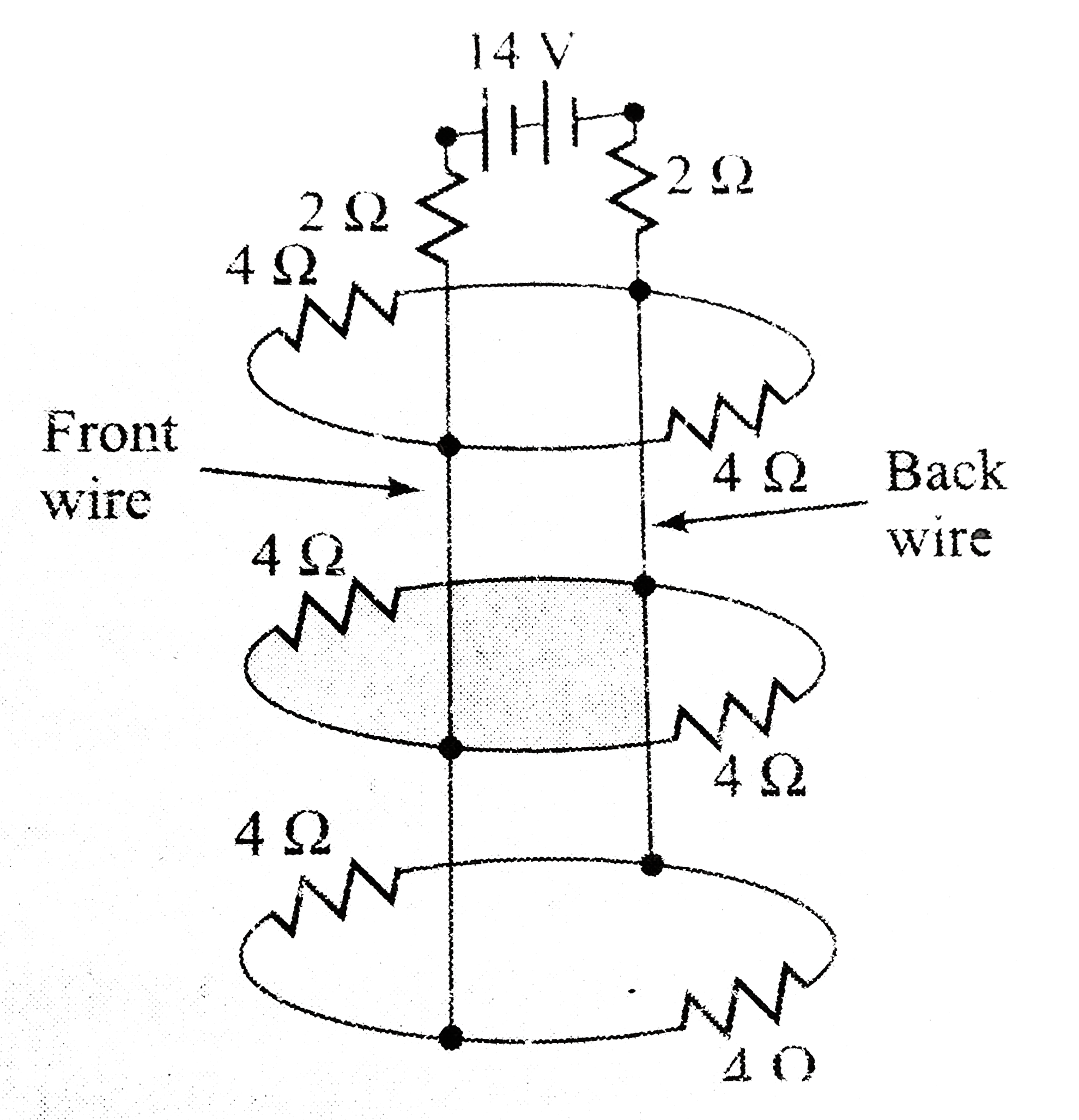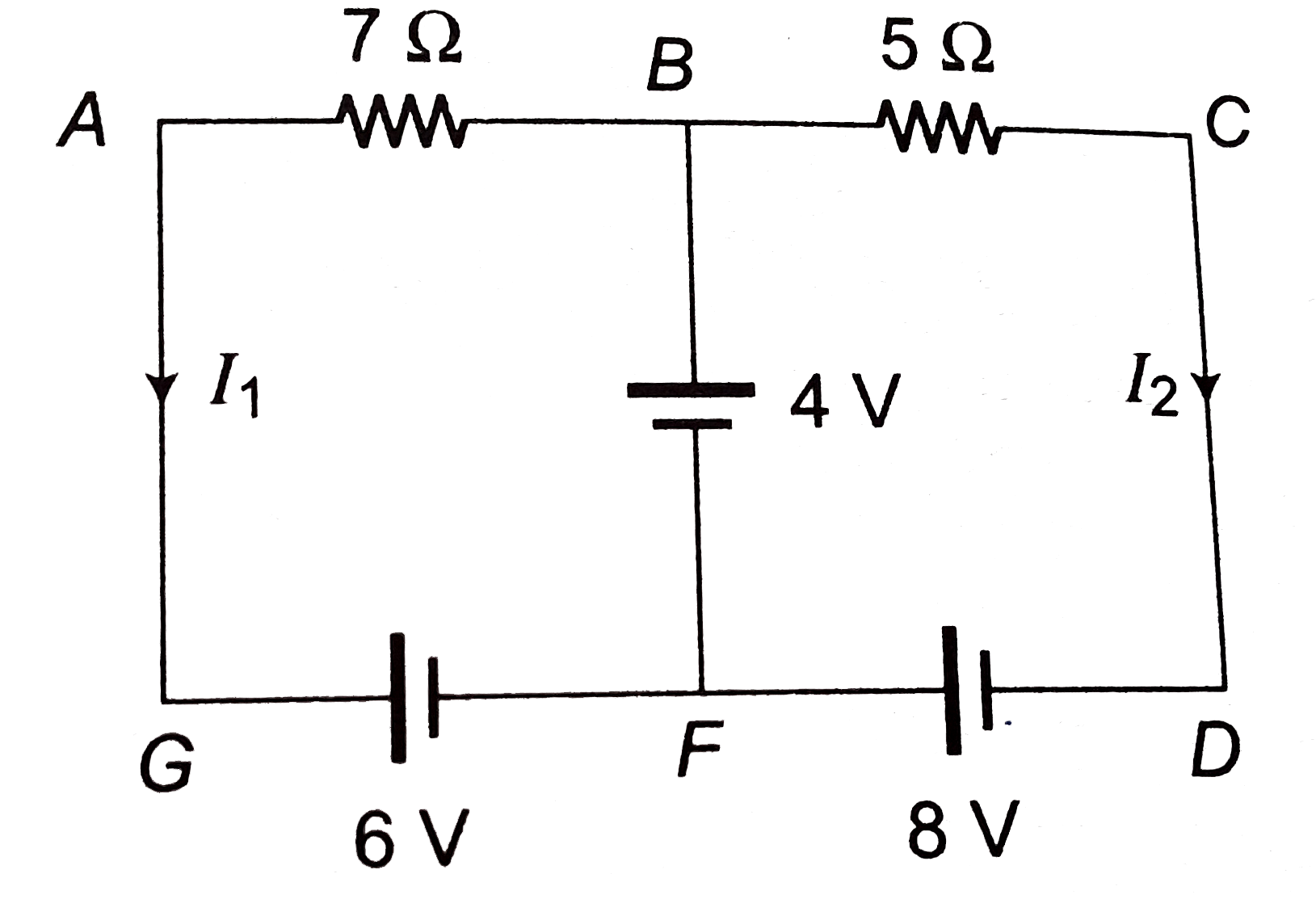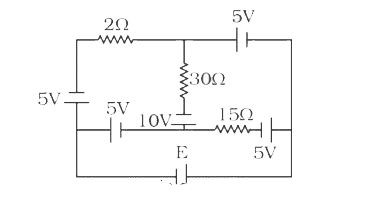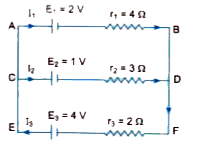A student connect a cell to a circuit and measures the current in the circuit as I1. When he joins a second identical cell In seris with the first, the current becomes I2. When he connects the cells in parallel, the current through the circuit is I3. show that 3I2I3=2I1(I2+I3).Solution in Bengali
Suppse emf of each cell=E, internal resistance =r and resistance of the external circuit=R.
When there is only one cell in the circuit, I1=ER+r
When two cells are connected in series in the circuit
I2=2ER+2r
Again, when two cells are connected in parallel in the circuit,
I3=2E2R+r
Now, 1I2+1I3=R+2r2E+2R+r2E
or,I2+I3I2I3=3(R+r)2E=32.R+rE=32.1I1
or,3I2I3=2I1(I2+I3) (Proved)
Topper's Solved these Questions
- CURRENT ELECTRICITY BOOK - CHHAYA PUBLICATIONCHAPTER - CURRENT ELECTRICITY EXERCISE - NCERT TEXTBOOK QUESTION WITH ANSWER HINT
4 Videos
- CURRENT ELECTRICITY BOOK - CHHAYA PUBLICATIONCHAPTER - CURRENT ELECTRICITY EXERCISE - NCERT EXEMPLAR QUESTION WITH ANSWER HINT(MCQ-1)
2 Videos
- CURRENT ELECTRICITY BOOK - CHHAYA PUBLICATIONCHAPTER - CURRENT ELECTRICITY EXERCISE - CBSE SCANNER
16 Videos
- COMMUNICATION STSTEMBOOK - CHHAYA PUBLICATIONCHAPTER - COMMUNICATION STSTEMEXERCISE - CBSE SCANNER
28 Videos
- DIFFRACTION AND POLARISATION OF LIGHTBOOK - CHHAYA PUBLICATIONCHAPTER - DIFFRACTION AND POLARISATION OF LIGHTEXERCISE - CBSE SCANNER
27 Videos
Similar Questions
A heating element using nichrome connected to a 230 V supply draws an initial current of 3.2A which settles after a few seconds to a steady value of 2.8A. What is the stready temperature of the heating element if the room temperature is 27∘C? Temperature coefficient of resistance of nichrome averages over the temperature range involved is 1.70×10−4∘C−1.
View SolutionConsider a current carrying wire (Current l) in the shape of a circle. Note that as the current progresses along the wire, the direction of current density →j changes in an exact manner,while the current j remains unaffected the agent that is essentially responsible for it is
View SolutionTwo wires of equal length, one of copper and the other of manganin have the same resistance .Which wire is thicker ?
View SolutionIn the given block diagram of a receiver, identify the boxes labelled as X and Y and write their functions.

View SolutionHow does the angular separation between fringes in single slit diffracton experiment change when the distance of separation between the slit and screen is doubled ?
View SolutionCalculate the value of the electic currents I_2, I_2 and I_3 in the given electrical network. a. I_1 = ……….. b. I_2 = ………… c. I_3 = ……………
View SolutionDetermine the currents I1,I2,andI3 for the network shown below

a. I1=……….,b.I2=………….,c.I3=…………….
View SolutionShows a Wheatstone bridge circuit. Which of the following correctly showsk the currents I_1, I_2 and I_3 in the decreasing order of magnitude?
View SolutionIn the circuit shown, the switch is closed at t=0 , the currents I_1, I_2 and I_3 are
View SolutionAn equiring physics student connects a cell to a circuit and measures the current drawn from the cell to I1. When he joins a second identical cell is series with the first, the current becomes I2. When the cells are connected in parallel, the current through the circuit is I2. When the cells are connected are in parallel, the current through the circuit is I3. Show that relation between the current is 3I3I2=2I1(I2+I3).
View SolutionIn the given circuit currents I1 and I2 are
 .
.
View SolutionIn the circuit shown, current through the resistance2Ω isi1 and current through the resistance30Ω is i2. The ratio i1i2 is equal to

View SolutionThe value of the current I_1,I_2 and I_3 flowing through the circuit given below is
View SolutionA galvanometer of coil resistance 100 Omega is connected to a shunt of resistance 10 Omega . The current through the galvanometer is i_1 , the current through the shunt is i_2 and the total current into the combination is i_3 , then the ratio i_1 : i_2 : i_3 is
View SolutionState Kirchhoff's rules. Use these rules to write the expressions for the currents I1,I2 and I3 in the circuit diagram shown in Fig.

View Solution
